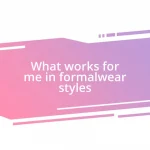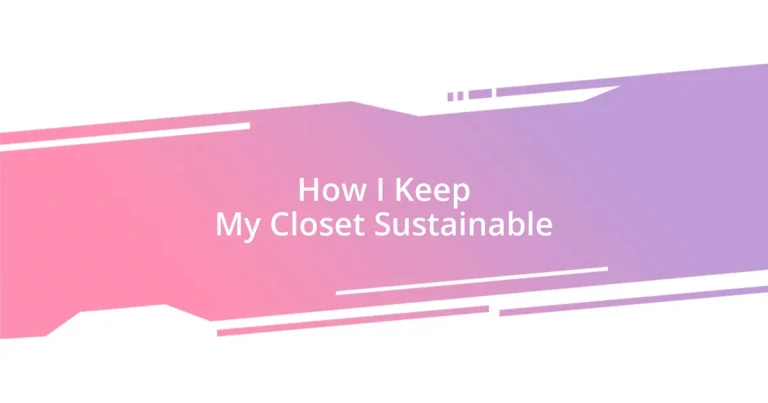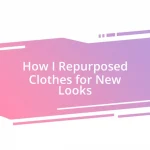Key takeaways:
- Shifting to sustainable fashion involves assessing your wardrobe, prioritizing quality over quantity, and making conscious choices about what to keep or donate.
- Selecting eco-friendly fabrics, such as Tencel™, organic cotton, and recycled polyester, is crucial for reducing environmental impact while maintaining a stylish wardrobe.
- Engaging in sustainable practices like second-hand shopping, clothing swaps, and proper garment care fosters a sense of community and prolongs the life of clothing.
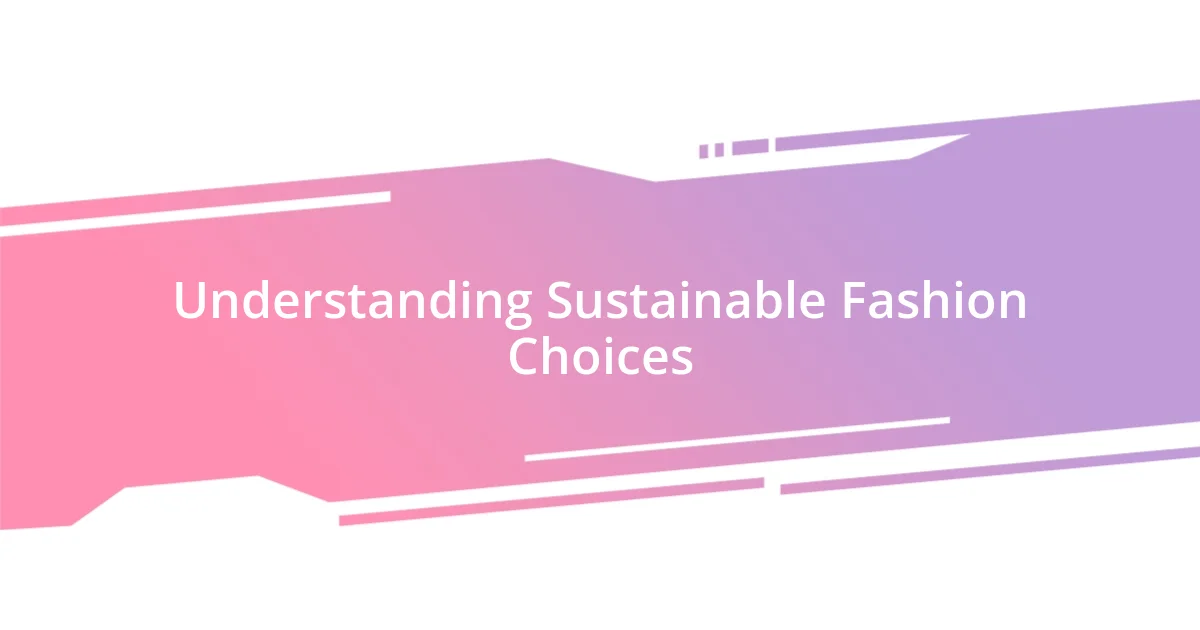
Understanding Sustainable Fashion Choices
Sustainable fashion is all about making mindful choices in what we wear. I still remember the moment I took a hard look at my closet, realizing many items had been worn only a handful of times. Isn’t it disheartening to think we often buy clothes that end up rarely seeing the light of day?
When I began to shift toward sustainability, I started prioritizing quality over quantity. I wonder, have you ever invested in a piece that you absolutely love and wear all the time? There’s something so satisfying about selecting garments made from eco-friendly materials, knowing they’re designed to last and tell a story.
The emotional connection to our clothing can’t be overstated. For instance, that vintage sweater from a flea market isn’t just a warm layer; it holds memories of a fun day spent discovering hidden gems. This personal attachment makes choosing sustainable options feel even more meaningful, inviting a deeper appreciation for what we wear.
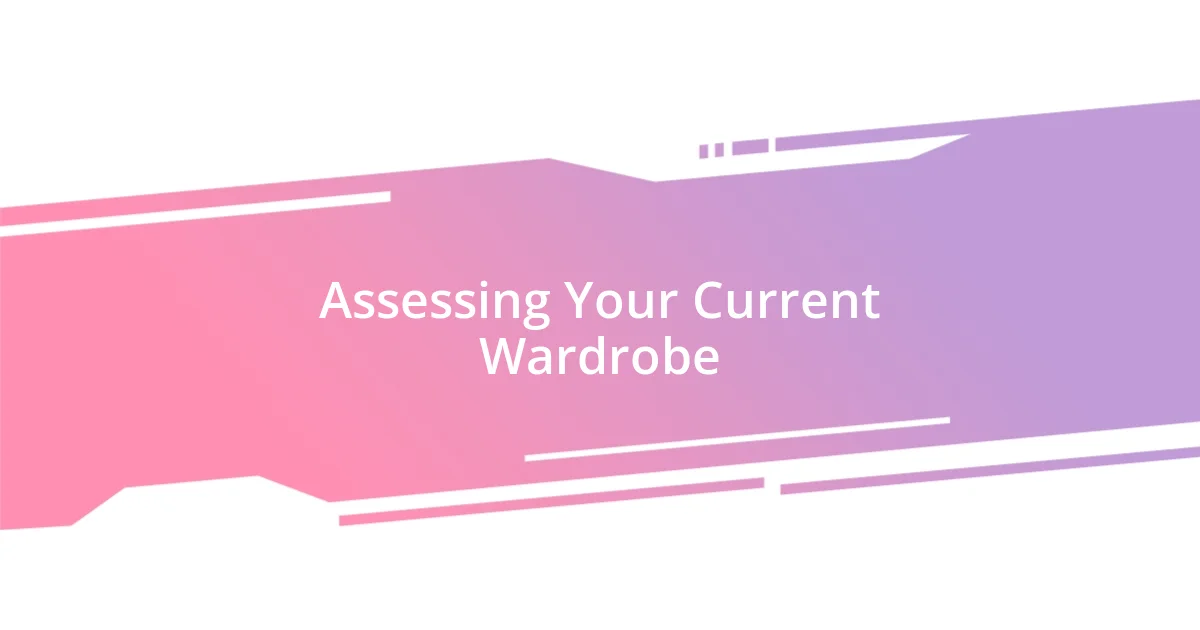
Assessing Your Current Wardrobe
Assessing your current wardrobe can be quite an eye-opener. I recall the first time I did this: my closet seemed like a colorful chaos, filled with items that I no longer felt connected to. As I cleared out pieces I hadn’t worn in ages, I discovered a handful of cherished items that truly reflected my style. It’s surprising how much clearer my fashion choices became once I recognized what I actually loved.
Next, think about the practicality of your items. I remember spotting a pair of trendy shoes that I bought on a whim. They looked great hanging in my closet, but I realized I had only worn them once because they were uncomfortable. This is a crucial moment—it’s not just about opting for fashionable pieces, but also considering how often I truly wear them. The emotional weight of items I no longer use can linger, but letting go has freed up space for pieces that I genuinely love and wear regularly.
To organize your evaluation, I found that creating a simple table can help highlight what’s worth keeping versus what needs to go. It’s a practical reflection that can transform your closet sustainably. Here’s a template based on my experience:
| Criteria | Your Items |
|---|---|
| Frequency of Wear | (How often do you wear it?) |
| Emotional Connection | (Do you love it? Does it bring back good memories?) |
| Quality | (Is it well-made and durable?) |
| Versatility | (Can it be styled in multiple ways?) |
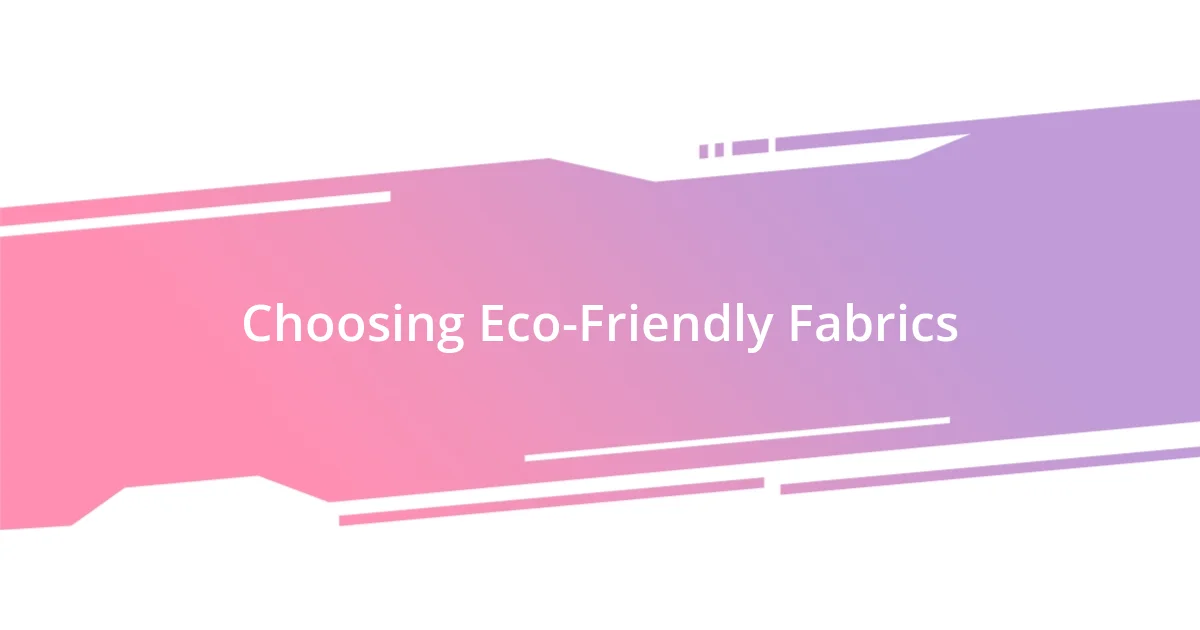
Choosing Eco-Friendly Fabrics
Choosing eco-friendly fabrics has become an essential part of my sustainable fashion journey. I used to overlook the environmental impact of my clothing choices, but once I started researching, I was surprised to learn how many fabrics are available that are kind to the Earth. For instance, I vividly remember discovering Tencel™. It’s not only soft and breathable, but it’s also made from sustainably sourced wood pulp using a closed-loop process. That simple knowledge made me incredibly excited about incorporating it into my wardrobe.
When it comes to selecting eco-friendly fabrics, here are some key materials to consider:
- Organic Cotton: Grown without harmful pesticides, organic cotton is often softer and healthier for the skin.
- Linen: Made from the flax plant, linen requires fewer resources to produce and is biodegradable.
- Hemp: This super plant grows quickly and needs little water or chemicals, making it a fantastic eco-friendly choice.
- Recycled Polyester: Utilizing recycled plastics reduces waste and energy consumption while creating durable fabric.
- Tencel™: As I mentioned, it’s made from sustainably sourced wood pulp and produced in an eco-friendly way, making it a favorite of mine.
These fabrics not only feel good on the skin but also carry a sense of purpose, reminding me of my commitment to a sustainable lifestyle. Each time I wear something made from one of these materials, it’s like a small victory in my journey toward a greener wardrobe.

Embracing Second-Hand Shopping
Embracing second-hand shopping has truly transformed my approach to fashion. I still remember the first vintage store I visited with friends; the thrill of sifting through racks of unique pieces was intoxicating. I stumbled upon a beautiful blazer that had likely seen countless adventures before it made its way to me. It felt like a treasure, both because of its character and the story it undoubtedly carried.
One of the things I appreciate about second-hand shopping is its eco-conscious impact. According to reports, buying pre-loved items significantly reduces the demand for new production, which is often resource-intensive. For instance, when I bought a pair of jeans from a local thrift store, not only did I save money, but I also contributed to minimizing textile waste—an issue I genuinely care about. Doesn’t it feel good to think that your small choices can have a big impact on the planet?
Every time I wear my second-hand finds, I can’t help but smile at the way my wardrobe has evolved into something eclectic and expressive. Each piece feels like a conversation starter, sparking curiosity about its past and how it has shaped my present style. Plus, there’s something incredibly fulfilling about being part of a sustainable fashion movement while avoiding the cookie-cutter trends often found in fast fashion. So, why not embrace the charm of the pre-loved? It’s not just shopping; it’s storytelling woven into the fabric of our lives.
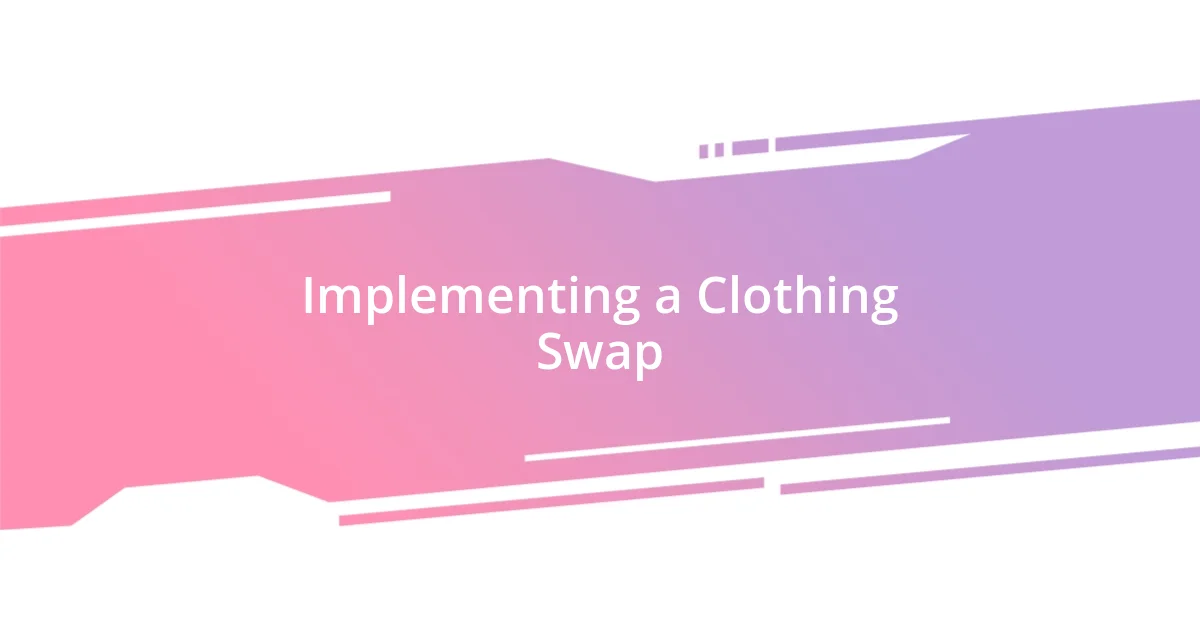
Implementing a Clothing Swap
Implementing a clothing swap is one of the most enjoyable and sustainable ideas I’ve incorporated into my closet strategy. I remember the first time I hosted one at my home with a few close friends. We gathered our unwanted pieces and made an event out of it—snacks, music, and laughter filled the room. It turned into a delightful treasure hunt, with each of us excitedly trying on each other’s castoffs. The best part? We left with new-to-us items without spending a dime!
Each time I participate in a clothing swap, I’m reminded of the immense value of community and creativity. I’ve exchanged everything from winter coats to quirky accessories, allowing my wardrobe to evolve without the guilt of new purchases. Isn’t it amazing how a simple gathering can lead to a fresh wardrobe and strengthen friendships? Plus, knowing that I’m prolonging the life of clothing that would otherwise sit untouched in a closet fills me with joy.
Engaging in clothing swaps also fosters open conversations around sustainability. I often find myself talking to my friends about their favorite eco-friendly practices while we sort through our choices. These swaps have created a space for us to share tips, tricks, and ideas about conscious consumerism. It’s like a mini movement, reminding us how powerful our collective efforts can be for the planet. So, are you ready to bring your friends together for a fun afternoon that benefits both your style and the environment?
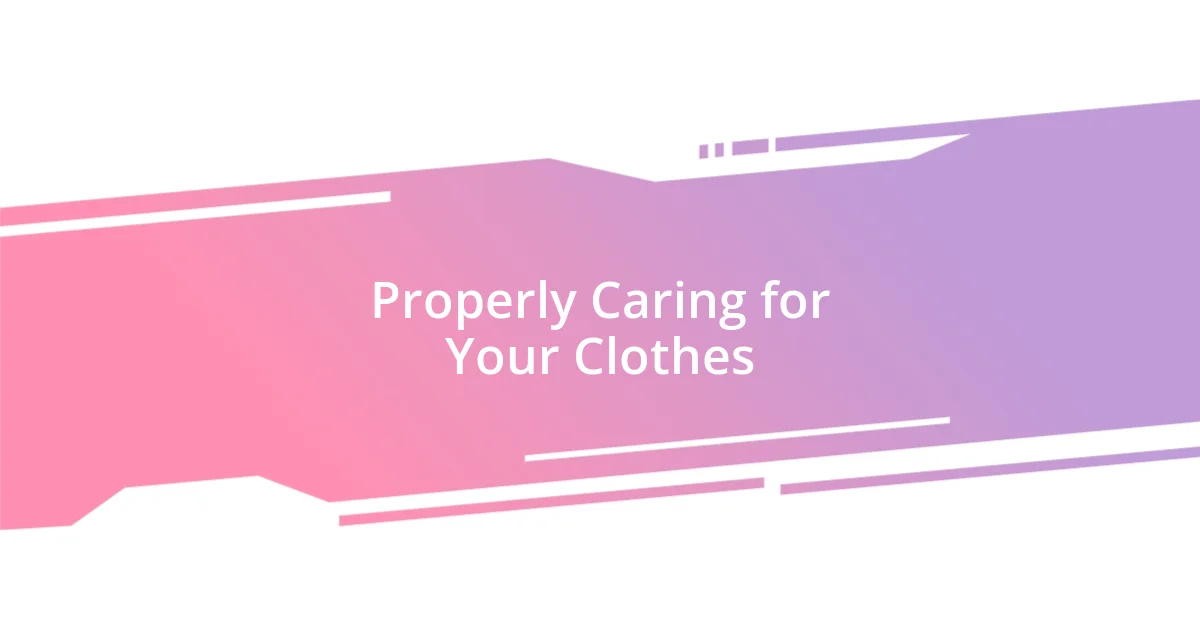
Properly Caring for Your Clothes
Caring for my clothes has become a vital part of my sustainability journey. I’ve learned that washing clothes less frequently dramatically reduces wear and tear. When my favorite shirt doesn’t have visible stains or odors, I simply hang it to air out. This not only extends the life of the fabric but also lessens the energy and water usage in my laundry routine. Isn’t it amazing how a small habit can change the lifecycle of our garments?
I also pay close attention to the care labels on my clothing. These little tags hold a wealth of information, guiding me on how to wash and dry my items properly. For instance, I used to throw everything into the dryer, but now I primarily air dry my delicate pieces. This simple switch has not only kept my clothes in better shape but has also saved me on my energy bills. Have you ever considered how just following those instructions can help your wardrobe last longer?
Lastly, I make it a habit to mend my clothes instead of tossing them out at the first sign of damage. I remember feeling a twinge of sadness when a favorite pair of jeans got a small tear. Instead of discarding them, I took a moment to learn basic sewing techniques. Now, those jeans have a patch that tells a story, and every time I wear them, I feel proud of my efforts to keep them alive. Isn’t there something incredibly satisfying about giving your clothes a second chance?
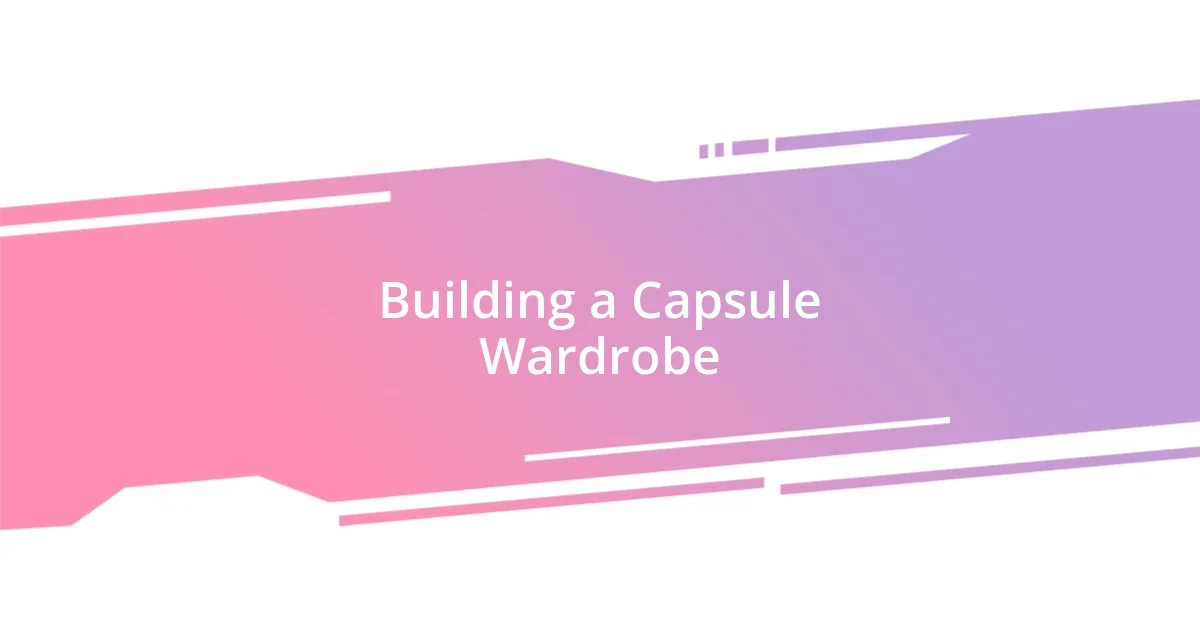
Building a Capsule Wardrobe
Building a capsule wardrobe has truly transformed my approach to fashion. Initially, the idea of limiting my closet felt restrictive, but as I dove into it, I found it liberating. I remember sifting through clothes and realizing how many items I had that I barely wore. Paring down to a select few versatile pieces not only made getting dressed easier but also helped me appreciate each item more. Have you ever noticed how a smaller selection often leads to more creative outfit combinations?
When I first started curating my capsule wardrobe, I focused on neutral colors and classic styles. I still recall purchasing a timeless trench coat that quickly became my go-to piece. It paired beautifully with almost everything I owned. The simplicity of choosing clothes that mix and match effortlessly made mornings less chaotic. Isn’t it remarkable how a well-planned wardrobe reduces decision fatigue and allows for more impactful choices?
I also discovered the joy of intentional shopping. Each time I add a new item, I think carefully about how it fits into my existing collection. Recently, I found a stunning dress that I could wear on several occasions. Instead of impulsively buying it, I reflected on what I would wear it with and how often I would truly love it. This thoughtful approach not only enhances my wardrobe but also aligns with my sustainable values. Have you ever paused to consider how each new piece might alter the dynamics of what you already own?


